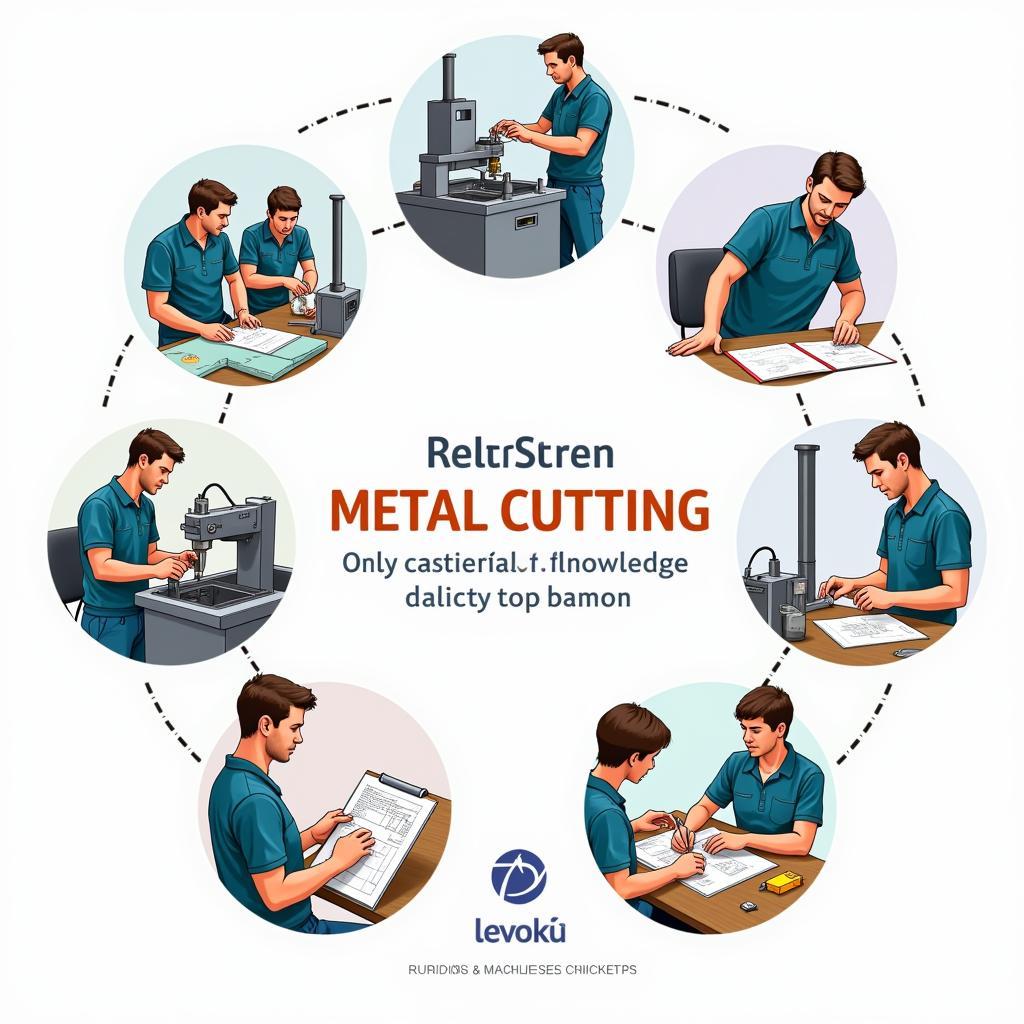Metal cutting skill standards play a crucial role in the training and evaluation of worker competency. This article delves into these standards, providing a comprehensive understanding of industry requirements and career development paths.
The Importance of Metal Cutting Skill Standards
Mastering metal cutting skill standards not only enhances a worker’s proficiency but also ensures product quality, workplace safety, and increased productivity. For businesses, adopting these standards facilitates the recruitment of suitable personnel, provides structured training, and boosts competitive advantage.
Core Elements of Skill Standards
Metal cutting skill standards encompass several core elements, ranging from theoretical knowledge to practical skills. Key components include:
- Material Knowledge: Understanding the properties of different metals to select appropriate tools and cutting methods.
- Machine Operation Skills: Proficiency in operating various metal cutting machines safely and effectively.
- Technical Drawing Interpretation: Comprehending technical specifications and ensuring precise product machining.
- Measurement and Inspection Skills: Verifying products meet required dimensions, accuracy, and quality standards.
Classification of Skill Standards
Metal cutting skill standards are categorized by levels, from basic to advanced. Each level requires workers to meet specific criteria in knowledge, skills, and experience.
Basic Level
At the basic level, workers need to grasp fundamental skills in operating cutting machines, interpreting simple drawings, and performing basic machining operations.
Intermediate Level
At the intermediate level, workers should be proficient in operating complex cutting machines, reading detailed drawings, and executing high-precision machining tasks.
Advanced Level
At the advanced level, workers require in-depth material knowledge, programming skills for machining processes, and the ability to handle production issues.
Real-World Applications of Skill Standards
Metal cutting skill standards are widely applied in manufacturing, mechanical engineering, automotive, and numerous other industries. Implementing these standards improves product quality, increases labor productivity, and ensures worker safety.
Mr. Nguyen Van A, a mechanical engineering expert, shared: “Adopting skill standards in recruitment and training has helped us build a high-quality workforce, meeting increasingly stringent market demands.”
Conclusion
Metal cutting skill standards are crucial for enhancing the competitiveness of both workers and businesses. Mastering and applying these standards will unlock numerous opportunities for future development.
FAQ
- What are metal cutting skill standards?
- How to achieve metal cutting skill standards?
- What are the levels of metal cutting skill standards?
- Where are metal cutting skill standards applied?
- What is the importance of metal cutting skill standards?
- Where can I learn more about metal cutting skill standards?
- How to evaluate metal cutting skills of a person?
Suggested related questions and articles on the website:
- Industries related to metal cutting
- Job opportunities in the metal cutting industry
For support, please contact Phone: 0372666666, Email: [email protected], or visit us at: 55 To Tien Thanh, Hanoi. Our customer care team is available 24/7.
